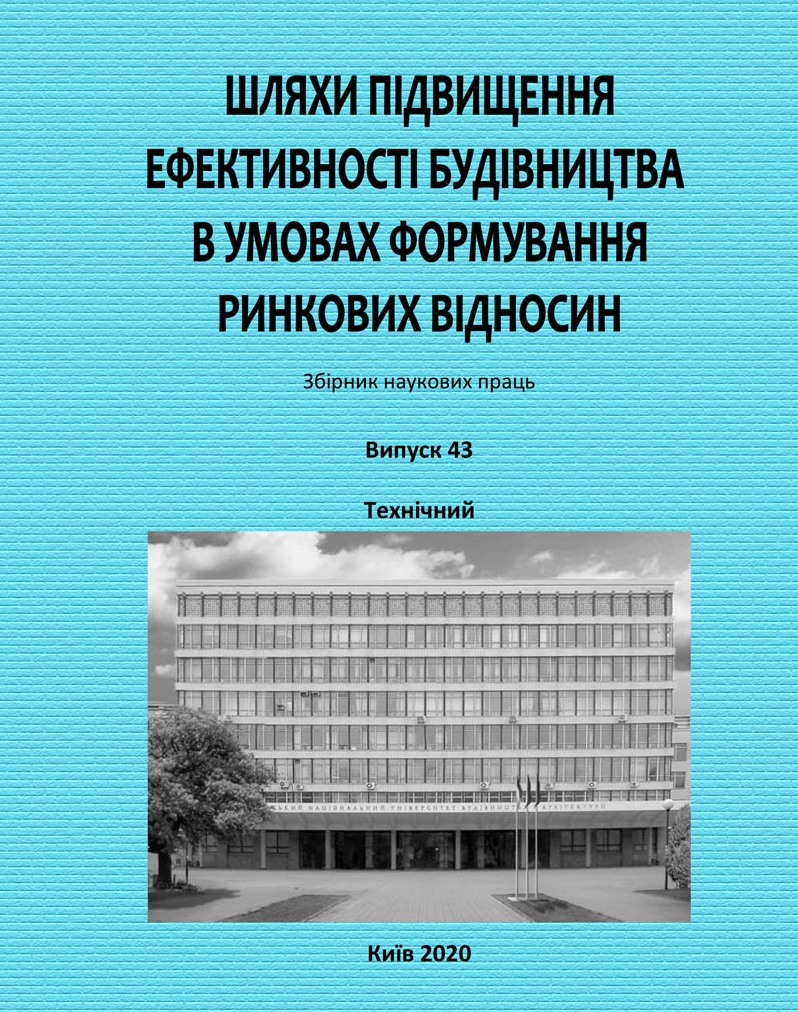Research and evaluation of methods of regulating the modes and parameters of the selection machine
DOI:
https://doi.org/10.32347/2707-501x.2020.43.166-175Keywords:
construction, technology, concrete mix, resonant machine, regulation, stabilization, parameters, amplitude, frequency, phase angleAbstract
The paper deals with the study of a generalized model of a resonant vibrating machine, which fully takes into account the dynamic features of all major types of resonant machines and integrates the dynamics of two-mass resonant vibrating machines for compacting concrete mixtures.
The research method envisaged the use of a discrete model of a resonant machine taking into account the concrete mixture. Concrete mixture in the equations of motion is represented by a factor that takes into account the wave phenomena .. The assumption is made that the most effective are the resonance machines that are subject to stabilization of the mode of operation over time. In this condition, it was assumed that the regulation of the working process of vibrating machines is more efficient than the mode of their operation closer to the resonance and the higher the coefficient of resonant amplification of vibrations.
In order to substantiate approaches to the problem of vibration machine automation, a generalized dynamics analysis was performed, which revealed the general dynamic features of these machines. The equations of motion of the resulted model are deduced, the solution of which is obtained analytical dependences, which describe the dynamics of the resonant vibrating machine and serve as a prerequisite for the development of methods of regulation and design features of the vibrating machine. Research has identified a number of parameters that are capable of implementing the process of regulation and stabilization of the resonant mode of operation of the shock - vibrating machine. In the context of these studies, it is established that the phase angle can be a parameter for regulating and ensuring the regulation processes. It is found that the value of the phase angle decreases with increasing contact time with the vibration limiter of the vibration machine working bodyReferences
Lanets O., Derevenko I., Borovets V., Kovtonyuk M., Komada P., Mussabekov K., Yeraliyeva B. (2019). Substantiation of consolidated inertial parameters of a vibrating bunker feeder. Przeglad elektrotechniczny. R. 95, pp. 47–52.
Bauman, V.A., Bykhovsky, I.M. (1977). Vibration machines and processes in construction. M.: Higher school, 255 p.
Osmakov, S.A., Braude, F.G. (1972). Shock-forming machines. M.: Stroyizdat, 152 p.
Gusev, B.V., Deminov, A.D., Kryukov, B.I. (1982). Shock-vibration technology of compaction of concrete mixtures. M.: Stroizdat, 150 p.
Savinov, O.A., Lavrinovich, E.V. (1986). Vibration technique of compaction and molding of concrete mixtures. L.: Stroizdat, 280 p.
Nesterenko, M. (2015). Prohresyvnyi rozvytok vibratsiynykh instalok z prostorovymy kolyvanniamy dlia formuvannia zalizobetonnykh vyrobiv. Zbirnyk naukovykh prats. Ser .: Haluzeve mashynobuduvannia, budivnytstvo. Issue 2 (44), pp.16–23.
Maslov, O., Salenko, Y., Maslova N. (2011). Investigation of the interaction of a vibrating plate with a cement-concrete mixture. Bulletin of the Mykola Ostrogradsky National University. Issue 2(67). Part 1, pp.93–98.
Nazarenko, I.I., Ruchynskyi, M.M., Sviderskyi, A.T., Kobylanska, I.M., Kalizhanova, A., Kozbakova, A. (2019). Development of energy-efficient vibration machines for the buiding-and-contruction industry. Przeglad Elektrotechniczny. № 95. 4, pp. 53-59.
Nazarenko, I., Svidersky, A., Dedov, O. (2011). Creation of high-efficiency vibration sealing machines of the new generation. Bulletin of the National Technical University of Ukraine "Kyiv Polytechnic Institute". № 63, pp.219–238.
Nazarenko, I.I. (2007). Applied problems of vibration systems theory: Textbook (2nd edition). К.: KNUCA, 252p.
Downloads
How to Cite
Issue
Section
License
Copyright (c) 2020 I. Nazarenko, V. Slipecki

This work is licensed under a Creative Commons Attribution 4.0 International License.
Authors who publish with this journal agree to the following terms:
- Authors retain copyright and grant the journal right of first publication with the work simultaneously licensed under a Creative Commons Attribution License that allows others to share the work with an acknowledgement of the work's authorship and initial publication in this journal.
- Authors are able to enter into separate, additional contractual arrangements for the non-exclusive distribution of the journal's published version of the work (e.g., post it to an institutional repository or publish it in a book), with an acknowledgement of its initial publication in this journal.
- Authors are permitted and encouraged to post their work online (e.g., in institutional repositories or on their website) prior to and during the submission process, as it can lead to productive exchanges, as well as earlier and greater citation of published work (See The Effect of Open Access).

